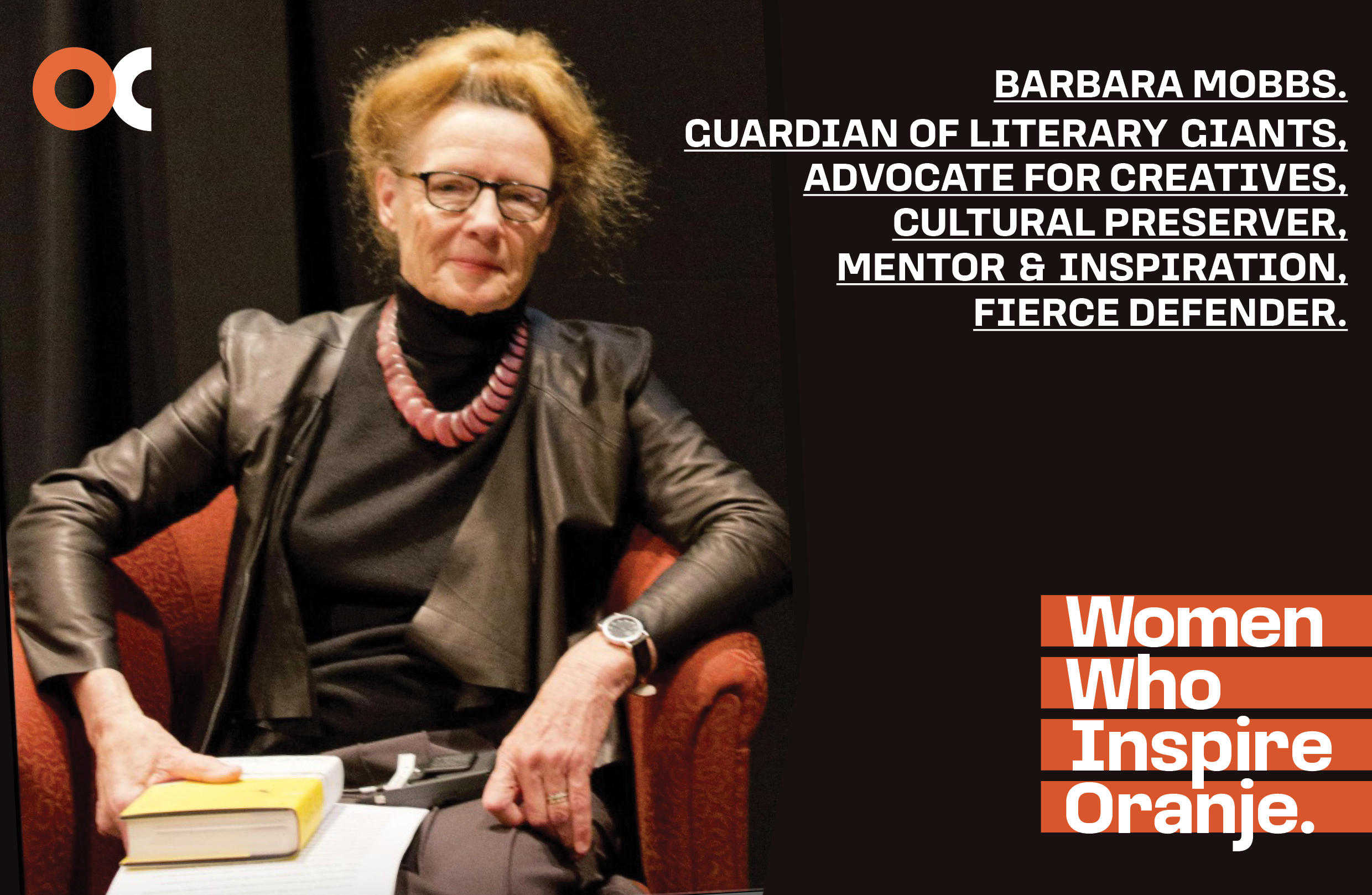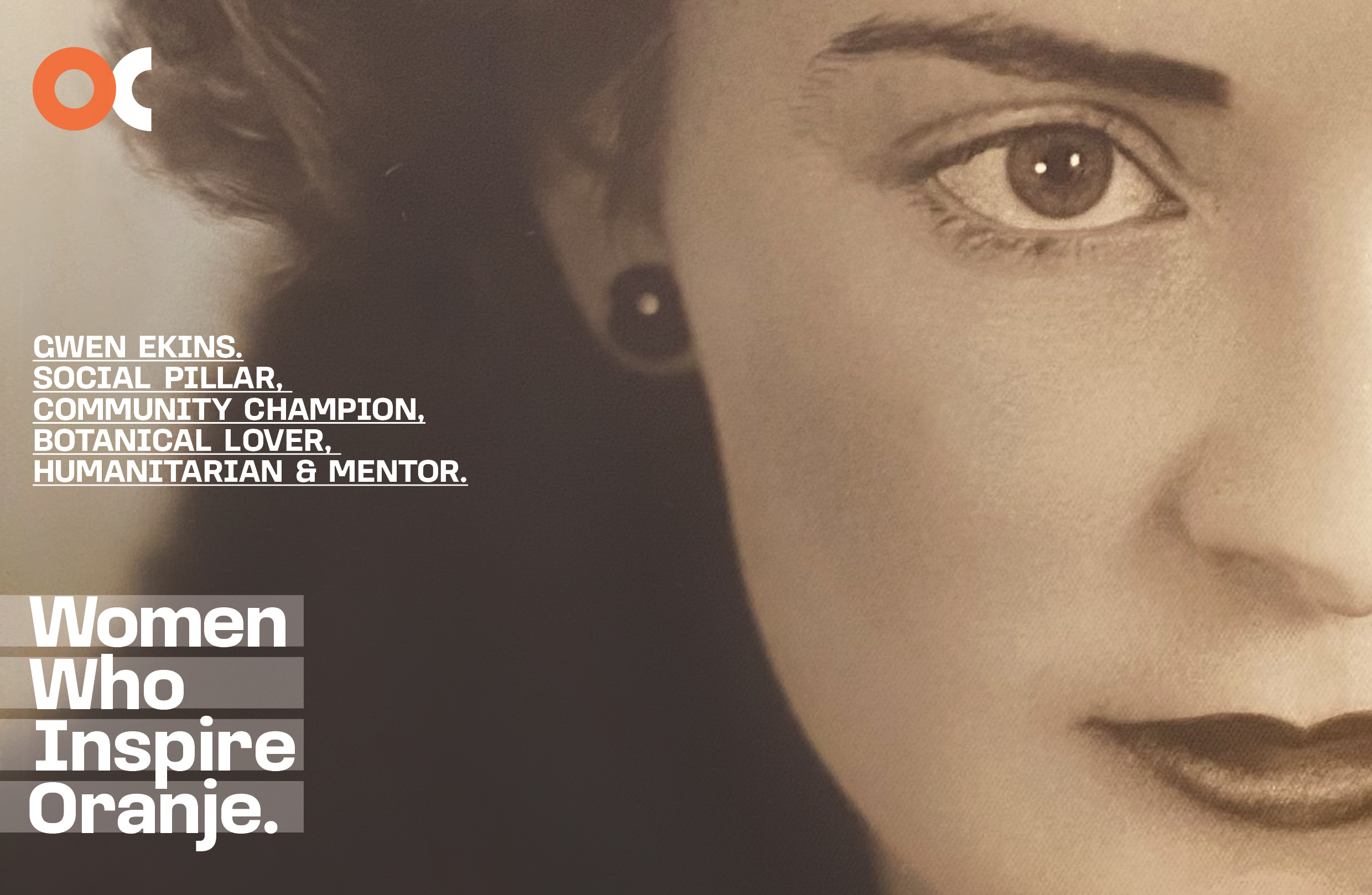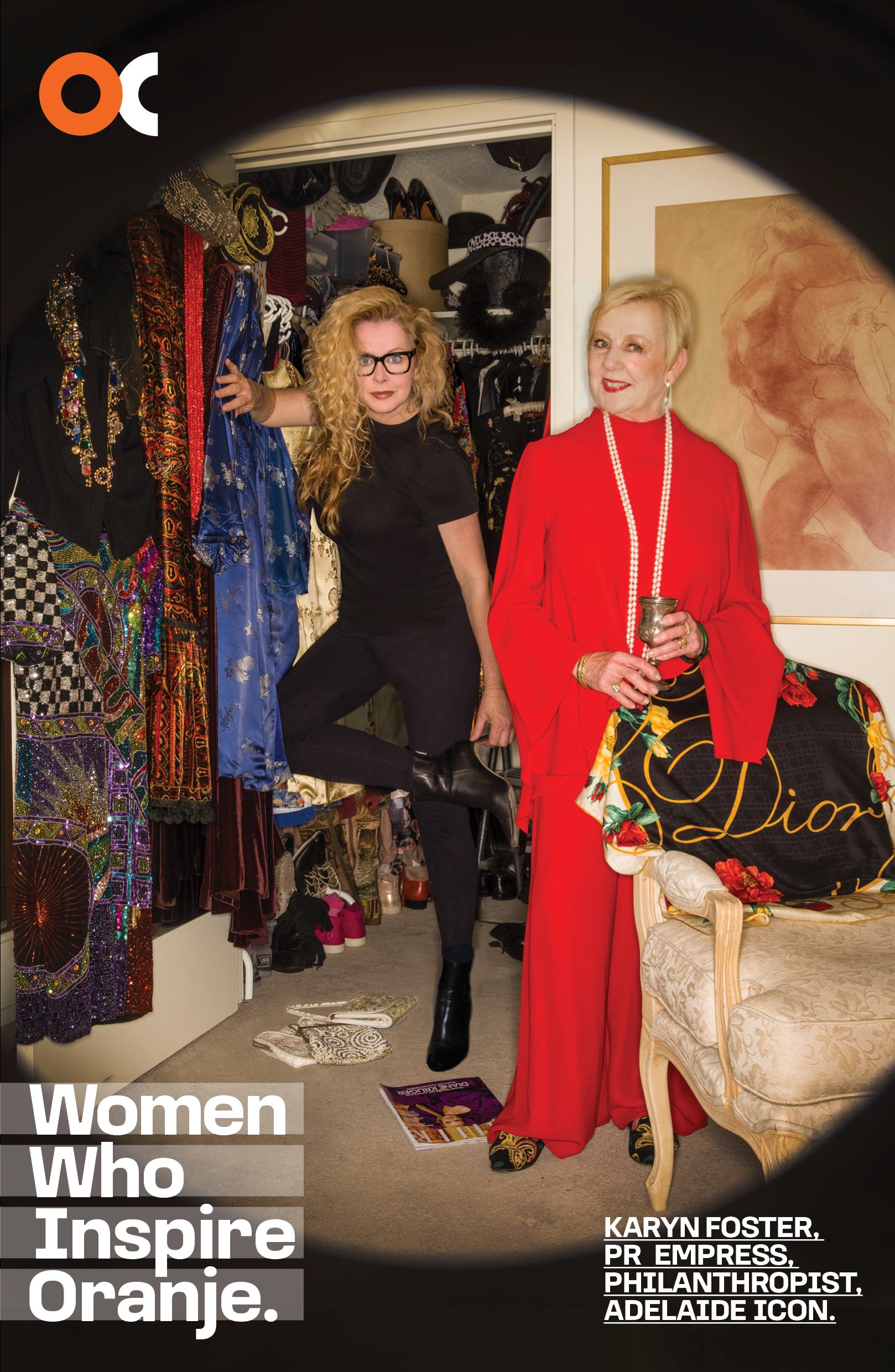
Thu 5 Sep 2024
Barbara Mobbs:
A Creative Powerhouse in My Life
Barbara Mobbs often referred to herself as “just a girl from Wagga,” but anyone who knew her understood that she was much more—a national icon. When I first met Barbara at 21, she was the literary agent for my husband, Graeme Koehne AO, even though he’s a composer. From that moment, we forged a special bond—almost without realising it—like she had always been there. Barbara quickly became much more than just a mentor. She was a force of nature, full of wisdom, wit, and an almost lyrical way of speaking that could feel like she was talking in riddles, yet was always so clever and insightful. She looked like Katharine Hepburn, spoke like her, smoked like her, and had that same tomboyish charm.
We’d spend hours sitting at the dining room table in Barbara and her husband Mobbsie’s humble flat in Darling Point, overlooking Sydney Harbour. Mobbsie would share back stories about Sydney life and its people, while Barbara would share stories about Patrick White and his life partner of 50 years, Manoly Lascaris. Barbara would imitate their accents and bring these stories to life in a way only she could. Balcony talks until 2:00 am were also a regular part of my stays with Barbara during the time I was modelling for David Jones in Sydney, always leaving me bleary-eyed for work the next day.
Barbara’s journey in the literary world was far from ordinary. After growing up in Wagga Wagga, she took her first big leap by working in Hong Kong for a publisher. She was the only non-Asian and, moreover, the only female publisher. This early experience in a foreign and challenging environment no doubt helped shape the fierce and determined agent she would become.
Marrying Mobbsie in 1965, they moved to London where he worked in Harley Street as a dentist, and Barbara entered the publishing industry, further honing her skills and building the foundation for what would be a remarkable career.
In 1973, Barbara made the transition from publishing to becoming an agent with Curtis Brown, one of the most well-known agencies in Sydney and London. She made the switch because she believed that authors did not always do the best for themselves and needed someone to protect their interests, giving them the space and peace to write. However, in a shocking move in the late 1980s, Curtis Brown restructured and sacked Barbara, which led to her being fired as Patrick White’s Australian representative. This decision outraged White, who had been with the agency for half a century. White had only stayed with Curtis Brown because of Barbara’s representation, and after the restructuring, he asked her to become his agent independently.
A Guardian of Literary Giants
Barbara’s influence in the literary world extended beyond her work with living authors. She was entrusted with the literary estates of some of Australia’s most revered figures, including Nobel laureate Patrick White and the celebrated artist and writer Norman Lindsay. As the literary executor for these estates, Barbara was a fierce guardian of their legacies, ensuring that their works were preserved and respected according to their wishes.
White affectionately called her “The Flying Nun” (a staunch Catholic) because of her fierce dedication and unwavering support, a title he honored by dedicating The Memoirs of Many in One to her.
After his death, Barbara was entrusted with White’s papers, which he had famously instructed to be destroyed. However, believing that he didn’t truly want his long literary life to vanish without a trace, Barbara couldn’t bring herself to follow his instructions. Instead, she carefully preserved the materials, eventually placing them in the National Library of Australia. The sale of these papers was diligently planned, with Barbara ensuring that nothing of White’s was lost, preserving a treasure trove of Australian literary history.
Barbara represented some of Australia’s most celebrated authors, actors, composers and artists, including Helen Garner, Kate Grenville, David Malouf, Ruth Cracknell, Desmond Digby and Drusilla Modjeska. Her clients were some of the country’s most creative and influential voices, and Barbara took great pride in nurturing their careers and ensuring their work reached audiences both in Australia and internationally.
Committed to protecting the rights and livelihoods of the artists she represented, Barbara passionately advocated against changes to copyright law that would allow parallel importation. She believed that Australian publishers played a crucial role in nurturing local talent and that the proposed changes could undermine the industry she had worked so hard to build. “Copyright is the cornerstone of creativity,” Barbara wrote, emphasising that any change allowing parallel importation would threaten the foundation of the industry and the jobs it supported.
By the time Barbara retired in 2016, with 65 clients to her name, she was ranked in the top twenty in the Sydney Morning Herald’s list of the most influential ‘behind the scenes’ people in the arts—a true reflection of the remarkable impact and dedication she had over her 40-year career.
Barbara’s strength was a constant in my life, something I believed would always be there. In 2014, when I lost 80% of my business, Barbara and Mobbsie were staying with us in Adelaide. I thank God she was there. Having experienced similar setbacks herself, her understanding and support were invaluable. Barbara taught me how to navigate the challenges, to keep my head up, and to push forward even when the odds seemed insurmountable—and to always have strong contracts in place! She was my rock, the person I turned to when I needed strength, clarity, and a reminder of my own resilience.
Barbara passed away just a few weeks ago on our son Willem’s birthday, the 13th of August, which has made that day even more meaningful to me. She had just turned 81. Barbara left this world as Patrick White did—in her own quiet, understated way. With Mobbsie having passed away late last year, I know Barbara died of a broken heart.
Barbara wasn’t just a mentor; she was a true original. She taught me how to be strong, how to cut through the noise, and how to stay true to myself. Even now, I find myself channelling a bit of that Katharine Hepburn vibe when I need to be direct or handle a tough situation. Barbara was my life force—a one-of-a-kind mentor, a friend, and someone who left a lasting mark on my life. Her influence is something I carry with me every day, and I’m endlessly grateful for the bond we shared. I can almost hear her voice now, telling me to keep things simple and not make a fuss. But Barbara, you deserve to be celebrated. In everything I do, guiding my steps. My next project is for you.




